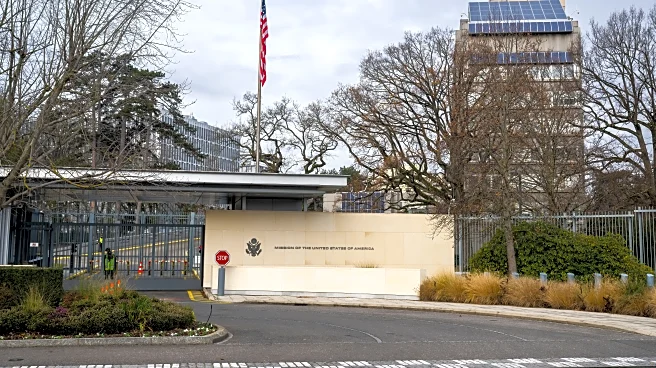What's Happening?
The U.S. Army conducted a demonstration of advanced counter-drone capabilities at the Truppenübungsplatz Putlos training ground in Germany. The event, part of Project Flytrap, showcased various technologies
aimed at countering drone threats, including net-shooting hunter drones and machine guns. The demonstration highlighted the integration of active and passive radar systems to detect drones, using FM radio signal perturbations. Brig. Gen. Curtis King emphasized the importance of real-time data integration from multiple sensors, which allows for effective counter-drone operations. The event also featured a 3D printer capable of producing drone frames quickly, enhancing battlefield adaptability. The demonstration aimed to inform European military officials about defending against Russian drone threats.
Why It's Important?
The demonstration signifies a shift in military strategy towards more cost-effective and efficient counter-drone measures. By integrating various sensor data, the U.S. Army can enhance its ability to detect and neutralize drone threats without relying on expensive missile systems. This approach not only reduces costs but also increases operational flexibility. The event also serves as a platform for European allies to learn and adapt these technologies to their defense strategies, particularly in light of increasing Russian drone activities. The ability to produce drones on-site using 3D printing technology further underscores the adaptability and resilience of military operations in dynamic environments.
What's Next?
Future iterations of Project Flytrap are expected to incorporate ground robotics and air-launched effects, expanding the scope of counter-drone capabilities. The U.S. Army plans to continue collaborating with European allies to refine these technologies and ensure their effectiveness against evolving threats. The integration of these systems into NATO defense strategies could strengthen collective security measures across the region. Additionally, ongoing feedback from soldiers and international partners will likely drive further innovations in counter-drone technology.













